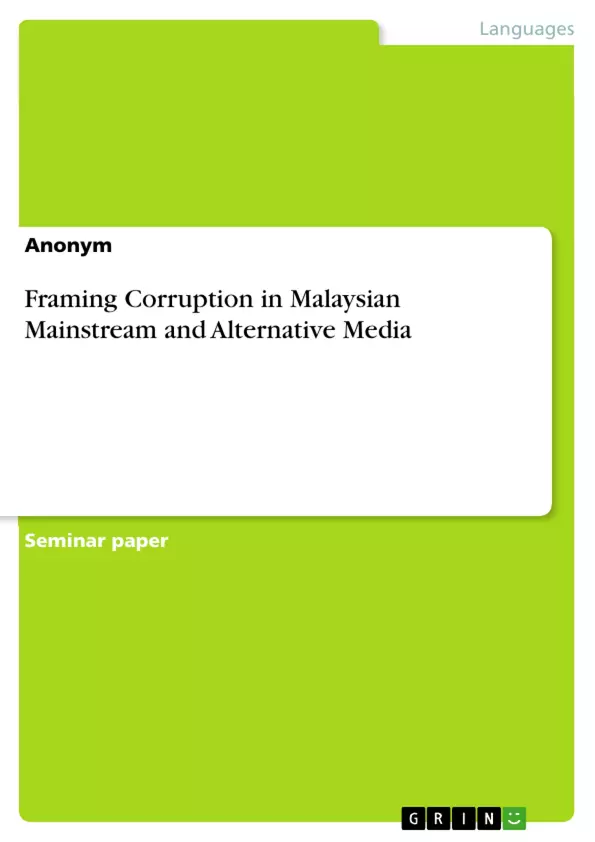This paper will carefully examine the different frames to the presentation of corruption in four Malaysian online newspapers, within which selection are included examples of both mainstream and alternative media. These frames determine the coverage of a specific event or topic, which means that they define the information that is selected and that which is left out when reporting on a certain issue. As different frames can lead to very different and perhaps even opposing point of views, they strongly influence and guide people's thinking process.
The first section is subdivided into three parts. As a first step, I will consider the origins of the close alliance between mainstream newspapers and the government. On the basis of articles from The Star Online and The Sun Daily, which are online examples of daily mainstream newspapers, the next two parts analyze how corruption is reported.
In the following chapter I will start by giving an overview of alternative media in the Internet. This will precede a re-examination of articles from the alternative online newspapers Malaysia Today and Free Malaysia Today, with regard to the presentation of corruption. The principal conclusions of this study will be summarized in the end.
Inhaltsverzeichnis (Table of Contents)
- Introduction
- Approaches to Corruption in Mainstream Media
- Mainstream Media
- Framing Corruption in "The Star Online"
- Framing Corruption in "The Sun Daily"
- Approaches to Corruption in Alternative Media
- Alternative Media
- Framing Corruption in "Malaysia Today"
- Framing Corruption in "Free Malaysia Today"
- Conclusion
Zielsetzung und Themenschwerpunkte (Objectives and Key Themes)
This paper examines the different framing of corruption in four Malaysian online newspapers, including both mainstream and alternative media. The author aims to analyze how the media's relationship with the government influences its coverage of corruption and how these framing techniques affect public opinion.
- The influence of government control on mainstream media in Malaysia
- The role of alternative media in providing diverse perspectives on corruption
- The impact of framing techniques on public perception of corruption
- The historical context and legal framework surrounding press freedom in Malaysia
- The role of self-censorship in mainstream media
Zusammenfassung der Kapitel (Chapter Summaries)
The first chapter, "Introduction," provides a brief overview of the corruption problem in Malaysia, highlighting the significance of media coverage in shaping public discourse. The second chapter, "Approaches to Corruption in Mainstream Media," delves into the historical context of the relationship between the government and mainstream media in Malaysia, discussing how government control and self-censorship influence the reporting of corruption in "The Star Online" and "The Sun Daily." The third chapter, "Approaches to Corruption in Alternative Media," examines the role of alternative media in providing alternative perspectives on corruption, focusing on the reporting of "Malaysia Today" and "Free Malaysia Today."
Schlüsselwörter (Keywords)
The primary keywords and focus topics of this text include: corruption, media framing, mainstream media, alternative media, government control, press freedom, self-censorship, Malaysia, "The Star Online," "The Sun Daily," "Malaysia Today," "Free Malaysia Today."
- Quote paper
- Anonym (Author), 2013, Framing Corruption in Malaysian Mainstream and Alternative Media, Munich, GRIN Verlag, https://www.hausarbeiten.de/document/319009


